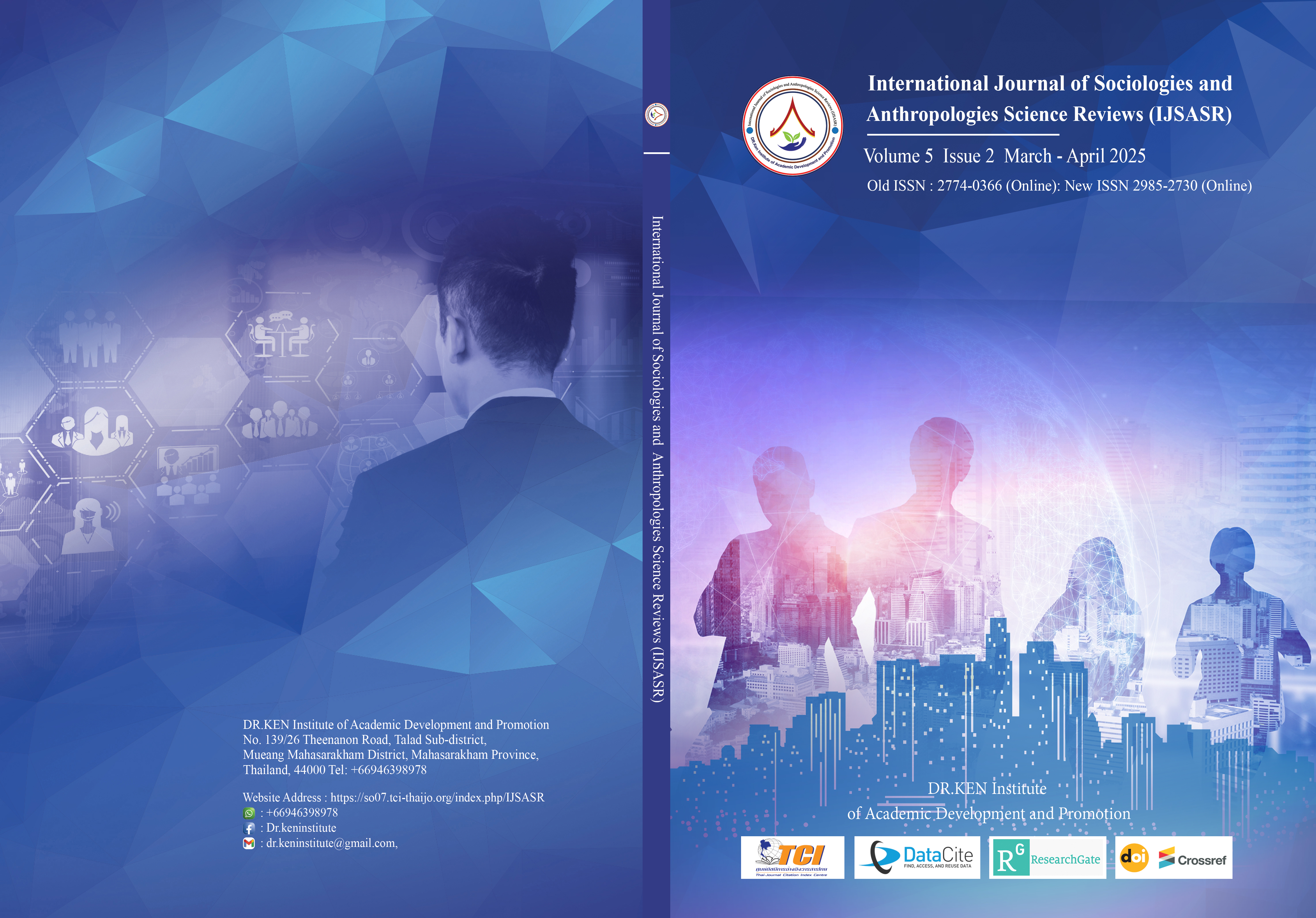Development of An Integrated Model on Sports and Education to Enhance the Competencies of Sports Schools Students in Guangdong Province, People's Republic of China
Main Article Content
Abstract
Background and Aims: The sports school system has long been the main channel for developing sports-related talent in China. However, because of the imbalance between academic learning and sports training, only a small proportion of students from these sports schools show enough competency in their careers. This research aims to build an integrated model of sports and education to enhance the competencies of sports school students.
Methodology: (1) For data collection, this research mainly used the questionnaire method. A stratified random sampling method was used to pick 40 sports schools in different regions out of a total of 149 sports schools in Guangdong, China. For each school, related parties such as students, teachers, and school administrators were randomly chosen to answer the questionnaire from different perspectives. (2) For data analysis and model construction, descriptive statistics including mean and standard deviation, median, and interquartile range were used to analyze the data. (3) To refine the model, the Delphi method was used to consult experts in education and sports. After three rounds of Delphi, the final model was constructed, which both considered the information from questionnaires and the advice from experts. The final model was confirmed through the Focus Group method to further show its practicality.
Results: The research identified significant factors impacting student-athlete performance, including specialized academic planning, after-school tutoring, and the integration of sports and education administration. The study revealed that a tailored approach to academic and athletic training, along with coordinated management between sports and education bureaus is essential for enhancing student competencies.
Conclusion: The developed integrated model offers a comprehensive framework for sports schools to improve student outcomes in both academic and sports fields. By prioritizing both academic and athletic development, the model supports the sustainable growth of sports schools and the preparation of well-rounded student-athletes for future challenges.
Article Details

This work is licensed under a Creative Commons Attribution-NonCommercial-NoDerivatives 4.0 International License.
Copyright on any article in the International Journal of Sociologies and Anthropologies Science Reviews is retained by the author(s) under the under the Creative Commons Attribution-NonCommercial-NoDerivatives 4.0 International License. Permission to use text, content, images, etc. of publication. Any user to read, download, copy, distribute, print, search, or link to the full texts of articles, crawl them for indexing, pass them as data to software, or use them for any other lawful purpose. But do not use it for commercial use or with the intent to benefit any business.

References
Dai, G. (2010). Research on the Development of Sports Schools in China. Journal of Physical Education Studies, 12(3), 45-52.
Djamel-Mokrani, D. (2020). Educational Process in Teaching Physical and Sports Activities in Secondary Education. Physical Education and Sport through the Centuries, 7(2), 189-198.
Li, A. (2020). Policy Initiatives for Integrating Sports and Education in China. Education Policy Review, 10(1), 15-27.
Lin, C. (2023). General Education Competencies in Taiwanese Sports Universities. Humanities and Social Sciences Communications, 10, 848.
Lin, C.J.Y. (2023). General education competencies from students’ perspectives: a case study of a sports university in Taiwan. Humanities and Social Sciences Communications, 10, 848. https://doi.org/10.1057/s41599-023-02344-z
Liu, B. (2020). Cultural Education in Chinese Sports Schools: A Critical Analysis. Journal of Sports and Cultural Studies, 5(2), 45-55.
Ma, D., & Zhai, X. (2016). The Role of Facilities in Sports School Development. Journal of Educational and Sports Resources, 7(3), 89-97.
Pei, H. (2015). Historical Evolution of Sports Schools in China. Journal of Sport Education History, 14(1), 21-30.
Pestano, R. D. (2021). Sports-Teachers’ Coaching Style Behavior Competency and Student-Athletes Performance in Sports. Kinestetik: Jurnal Ilmiah Pendidikan Jasmani, 5(1), 42-51.
Sun, G., & Jiang, Q. (2016). Challenges in the Education of Student-Athletes in Chinese Sports Schools. International Journal of Sports Pedagogy, 9(2), 33-41.
Wang, H. (2019). Balancing Academic and Athletic Development in Sports Schools. Chinese Education Review, 8(4), 67-73.
Yang, H. (2021). New Directions in Sports and Education Integration Policies in China. Journal of Sports Education Reforms, 12(3), 66-75.
Zhou, A. (2021). Innovative Models for Talent Cultivation in Sports Schools. Journal of Chinese Sports Science, 13(2), 98-108.






